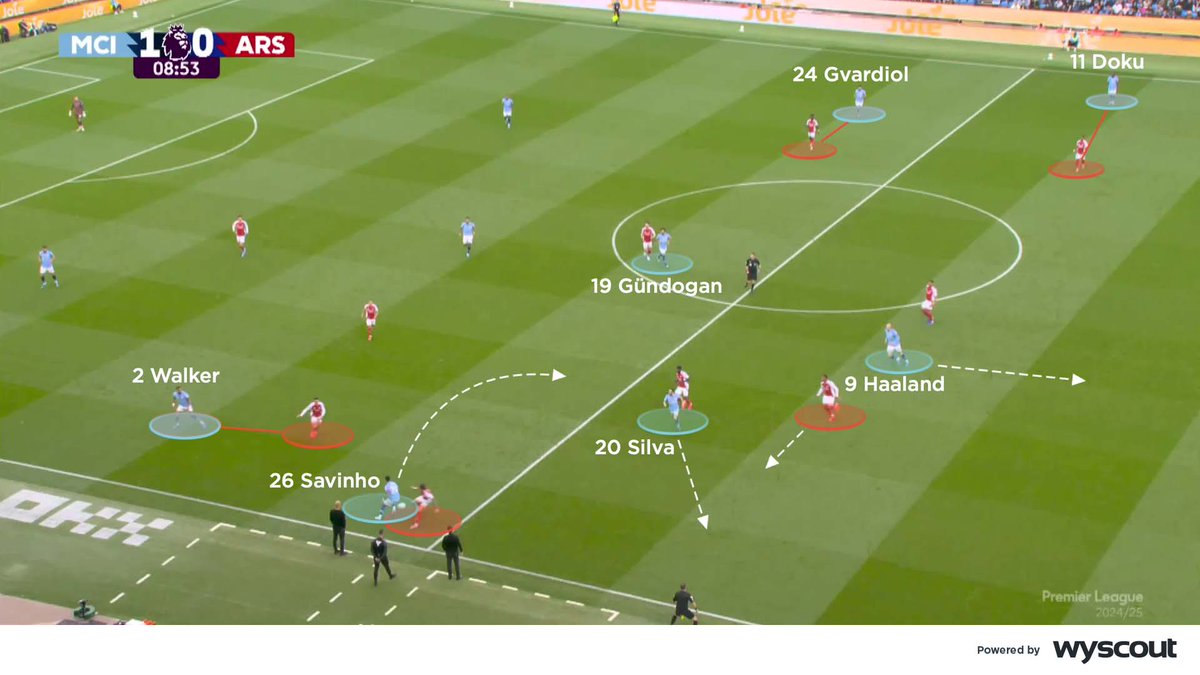Fresh analysis thread 🙌
How Manchester United's midfield movements and Bruno Fernandes’ central influence helped them beat Tottenham to go fifth... 🧐🧵
🔋 @Wyscout
#MUFC • #MUNTOT
How Manchester United's midfield movements and Bruno Fernandes’ central influence helped them beat Tottenham to go fifth... 🧐🧵
🔋 @Wyscout
#MUFC • #MUNTOT
Manchester United were set up in a 4-2-3-1 shape, but Fred pushed forward from the double pivot to become a number 8 and give them a stronger attacking presence in central midfield. Bruno Fernandes then adapted his positioning, moving into the left inside channel... 🧐🧵 

The hosts eventually pushed both full-backs higher, primarily working around the outside of Tottenham’s wing-backs. United’s wingers then came inside, with the freedom to rotate with Fred and Fernandes, as long as both inside channels were always occupied... 🧐🧵 

Preventing Spurs from breaking from their deep block meant the visitors were locked into their own half. Rashford’s runs on the blindside of Dier were threatening, especially when receiving from Fernandes. Casemiro and the United defenders were superb at breaking up play... 🧐🧵 

Fernandes’ positioning between the lines, and his ability to turn and face forward on his first touch, and deftly connect into Rashford running in behind, provided United with a significant threat throughout the second half... 🧐🧵 

Conte set Tottenham up in a 3-5-2, with Bissouma coming into the side. Bentancur was therefore given more attacking freedom, and pushed forward through the right inside channel with penetrative runs off the ball... 🧐🧵 

• • •
Missing some Tweet in this thread? You can try to
force a refresh
















